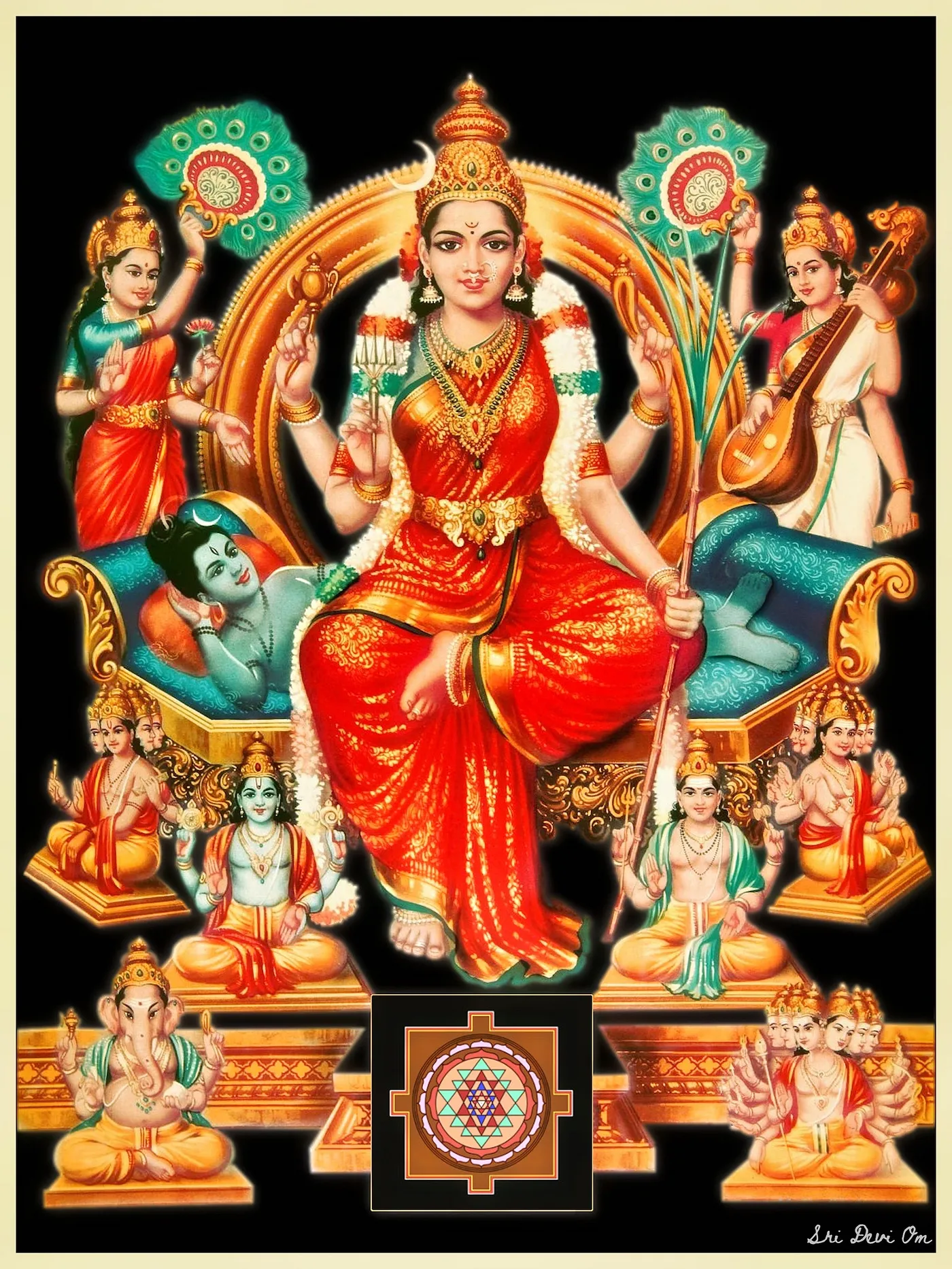The renowned Sage Agastya once harbored an audacious vision. His heart resonated with the Divine Energy in the feminine form, which attracted him to a spiritual path known as Sri Vidya. The sage yearned to bestow this profound wisdom upon the common public for their welfare. With unshakable determination, he prepared himself through self-discipline, devotion, and commitment.
With time, Sage Agastya’s vision grew beyond just men and boys. He aspired to illuminate the hearts of women and girls from all castes and social strata with spiritual and worldly wisdom. However, the conservative society’s strict traditions mandated that only women could become a teacher of the girls. As a result, the sage needed a well-educated female spiritual practitioner to support his noble mission.
A thorny issue loomed before him, though — for in those times, it was predominantly princesses who received an extensive education in scriptures, arts, and even the art of war. Nevertheless, the monarchs were reluctant to part with their daughters, especially for an ascetic life.
Yet, with unyielding resolve, Sage Agastya devised a plan to further his welfare mission. The sage recognized that the only way to gain the support of a princess for his cause was to marry her. But, such an arrangement was complicated because he wished to remain celibate, and no parent would ever bestow their daughter on such a sage.
Sitting in deep meditation, Sage Agastya scanned the world for a suitable woman. As if the Goddess Herself had helped him, he had a divine vision of a princess whose wisdom matched her beauty. She was the adopted daughter of the King of Vidarbha (currently in the state of Maharashtra in India). That girl who had blossomed into an affluent princess was Kaveri, also known as Kaushitaki and Varaprada.
Kaveri possessed an ethereal grace that marked her as a future queen. She was the apple of her father’s eyes, pampered by the riches of life. Consequently, Sage Agastya was unsure if she would agree to be a part of his noble cause. So he sent Sage Vedantin (name unsure) to gauge the intentions of Princess Kaveri.
Sage Vedantin met with Princess Kaveri and narrated the achievements of Sage Agastya. Eventually, he spoke about Sage Agastya’s cause, which deeply moved the princess. She fell in love with a sage unknown to her purely based on his compassionate heart.
Pleased by her benevolent nature, Sage Agastya approached the King of Vidharbha for Princess Kaveri’s hand. As expected, the monarch was reluctant, but the princess had already resolved to give up her life to support the sage and serve society. With a golden heart, she persuaded her father and even agreed to travel with the sage immediately.
When Princess Kaveri was about to depart her palace, Sage Agastya requested her to cast off her royal clothes and come with him in an outfit befitting a sage’s wife. The princess, who had never known poverty in her life, threw away her riches and cheerfully walked barefoot behind the sage for the sake of his cause.
As he had promised the King of Vidarbha, Sage Agastya wedded Princess Kaveri in a private ritual on the sacred banks of River Sindhu (Indus). By then, Sage Agastya had fallen in love with her, charmed by her beautiful heart, which eclipsed her stunning exterior beauty. He held her in high regard as his equal, a rare occurrence during the sage’s times.
Soon after, the sagely couple proceeded to the Haridwar region to engage in rigorous austerities. Before they began their spiritual journey, Sage Agastya initiated his wife, the erstwhile Princess Kaveri, into the Sri Vidya tradition.
Regardless, Sage Agastya and Princess Kaveri did not share a guru-disciple relationship. Instead, their bond resembled the one between Lord Shiva and Goddess Parvati. Agastya, like Shiva, thought of his wife as his equal in every manner. Still, he initiated her solely because initiation was mandatory to learn the complete Sri Vidya system.
At the time of initiation, Sage Agastya gave Princess Kaveri the name — Sage Lopamudra, the one who stole the joy (of animals). She was so beautiful that Sage Agastya, in his admiration for his wife, accused her of stealing her immaculate facial features from various animals. A classic husband who was head over heels in love with his wife!
Despite their mutual love, Sage Agastya and Sage Lopamudra dedicated their life to their social cause and lived without consummating their marriage. They toiled day and night on their mission to spread Sri Vidya.
Lopamudra not only supported her husband’s cause, but she became a spiritual mentor who played a vital part in the path of Sri Vidya — an entire sub-tradition notes her as its creator.
Further, she became one of the first women to run girls’ schools, teaching scriptures and music in the Vedic times. She became so beloved both by the royals and the commoners that many people referred to Agastya simply as Lopamudra’s husband, filling Agastya with pride and delight.
As a twist in fate, after 25 years of marriage, Lopamudra had a strong desire to have children during one of her meditations. She approached her husband, and to her surprise, Agastya consented.
The astute Lopamudra insisted that they could have children only if they gathered some wealth. So Agastya spent some time pursuing fortune. Finally, the sage earned enough riches, and the couple had four sons.
It soon became apparent that their purpose in having children was not carnal desires but to produce spiritual heirs to further their cause. The sagely couple nurtured their sons with care and passed on the wisdom of Sri Vidya to them before departing the earth when nature beckoned them.
In today’s world, where we highlight women’s empowerment, Sage Agastya and Sage Lopamudra’s contributions are noteworthy. Even today, in Southern India, where they actively worked on their mission, many girls from the priestly community are trained in arts and scriptures. (I’m one of those.)
Sage Lopamudra proved that when women are given the right opportunities and guidance, they are no less than any man in any field, including spirituality. Her influence was so significant that a sacred river in Southern India, River Kaveri, was named after her in the region where she lived with her husband.
May there be many more Sage Agastyas who believe that everyone has an equal right to wisdom, regardless of caste, creed, or gender. May many more Sage Lopamudras emerge, seizing the chance to empower themselves to focus selflessly on the welfare of this planet.
Love,
Sri Devi Om
A fun fact: The title Sage is typically used just for men, but per the dictionary, it is a unisex title. It’s time we use it equally for men and women. I’ve done my part by titling Lopamudra as a sage in his post.



